Exa
Sometimes, reading a well-written article can lead you astray...
Jeffery Luhn's engaging account of his journey in photography from enthusiastic amateur to professional photojournalist had my eyes glued to the screen. His story brings together his working life with all the ups and downs in his personal life, the two being inextricably connected. The thread weaving all these events together was his first slr camera (a gift from his Brother), the little Exa 1a.
.
All this roused my curiosity such that, once again, I found myself wandering around the 'Bay (you know where I mean). Not wanting to spend too much on a whim, my expectations were modest. My luck, however, was in. I came across the little beauty you can see here. It came with the basic waist-level viewfinder and what was likely the cheapest lens option at the time, the humble Ludwig Meritar 50mm f2.9.
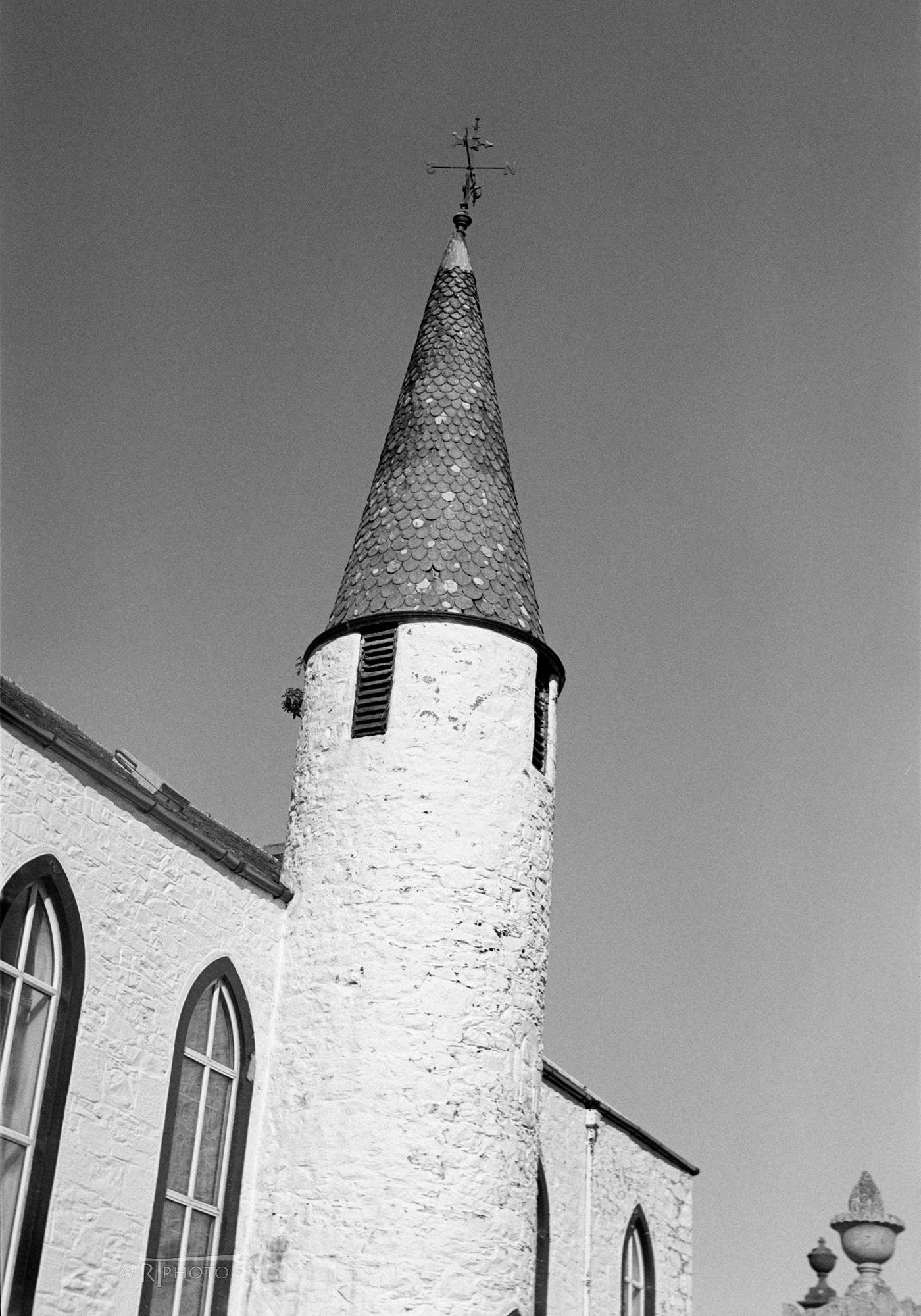
Part of what caught my eye was the unusual shutter, or lack of. Rather than a separate dedicated mechanism, the reflex mirror (in part) doubles up for this purpose. The other part is a light-baffle plate that swings up at the end of the exposure to close off the film chamber. For those if you interested, Marc Rochkind gives a more detailed description of how it works here.
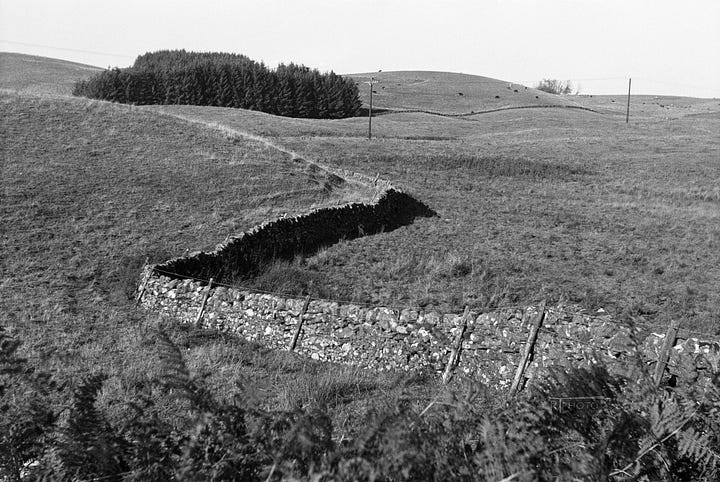
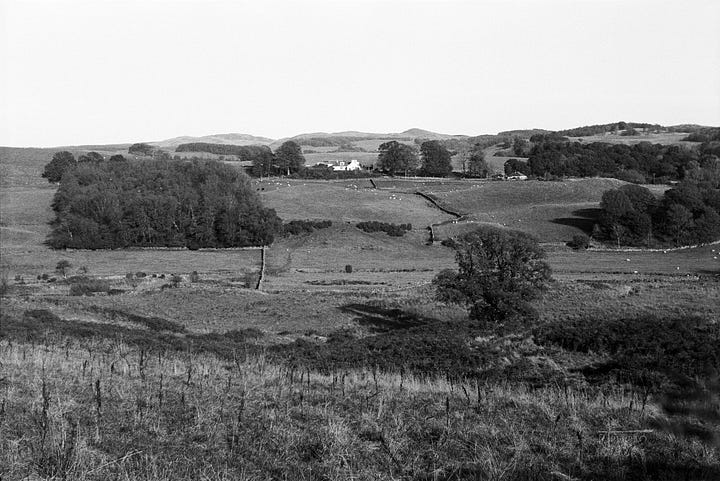
The Exa originally came about as a cheaper alternative to the iconic Exakta Varex and Kine cameras and was billed as "Exakta's little sister" at the time, back in the early 1950s. From that time it went through a number of iterations, the 1a hailing from the mid '60s. Sroyon Mukherjee has gone somewhat further down the Exa/Exakta rabbit hole than I have and has an excellent write-up here.
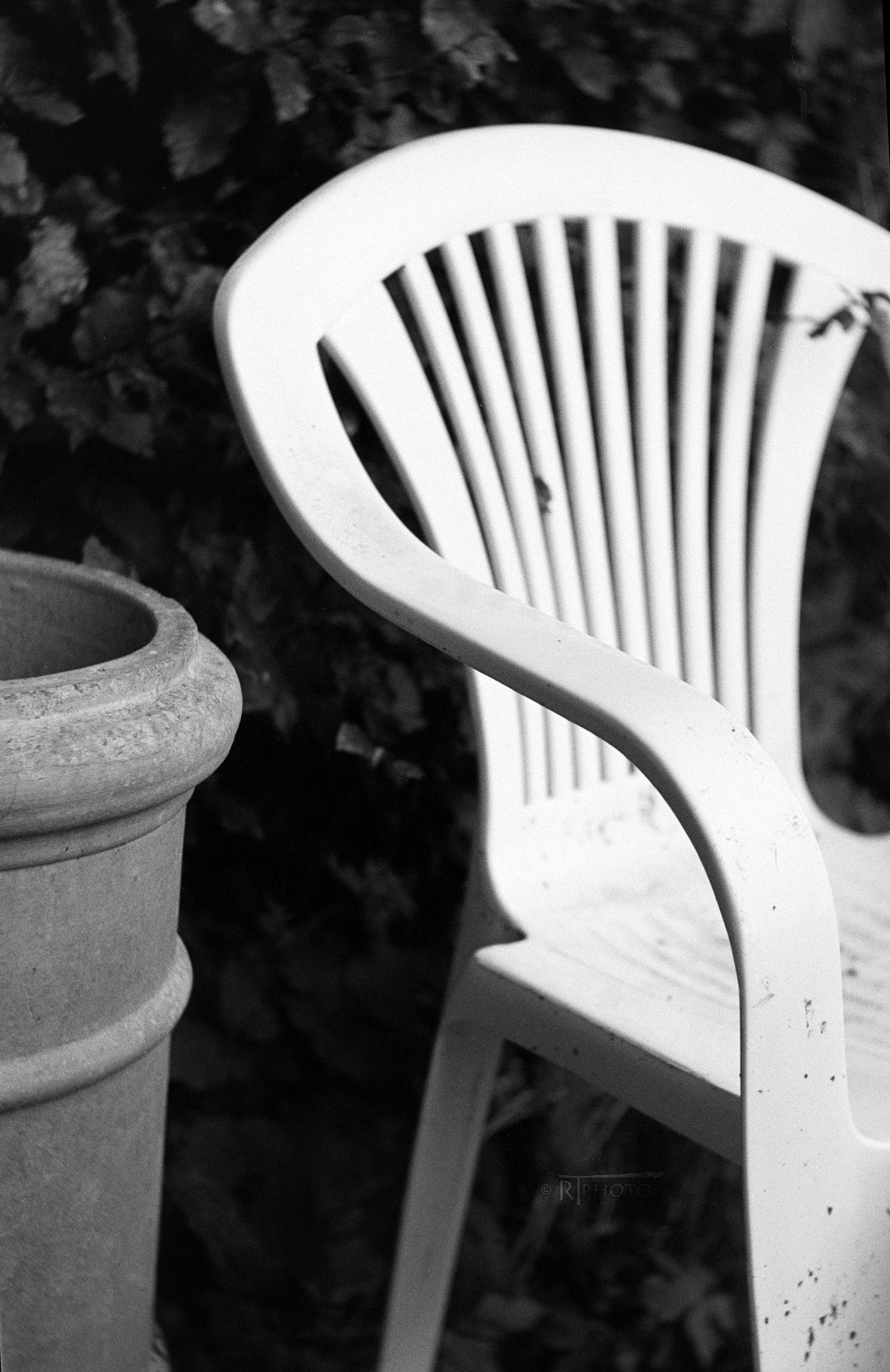
The camera is definitely quirky in use, with it's left-handed, front-mounted shutter button, waist-level viewfinder and preset lens (not to mention it's unusual body form).
Once in the hand, though, it's pedigree becomes evident, feeling very solid, with silky smooth controls. The viewfinder is surprisingly bright and contrasty, even with the lens's modest aperture, athough focussing is a little challenging. Even with the integral magnifier, I still need a pair of glasses to see the ground glass close enough for any hope of accurate focus. To be fair, though, this perhaps says more about my eyes than the camera.
There is an advertisement from the time that shows a lovely portrait of a doting father cradling his newborn. Next to them is an image of the camera outfit and although it shows the prism finder alongside, the camera has the waist level finder fitted. Assuming this was the set-up used to take the photo, I take my hat off to the photographer. Using this configuration in landscape mode is challenging enough, but when used in portrait orientation, things get a whole lot trickier. Not only is the image projected onto the ground glass screen laterally reversed, it is now also upside down. When you add to this the fact that you need to stand at right-angles to the subject, having to hold the camera up level with (and several inches in front of) your face, you may well understand my admiration for the person behind the camera back then...
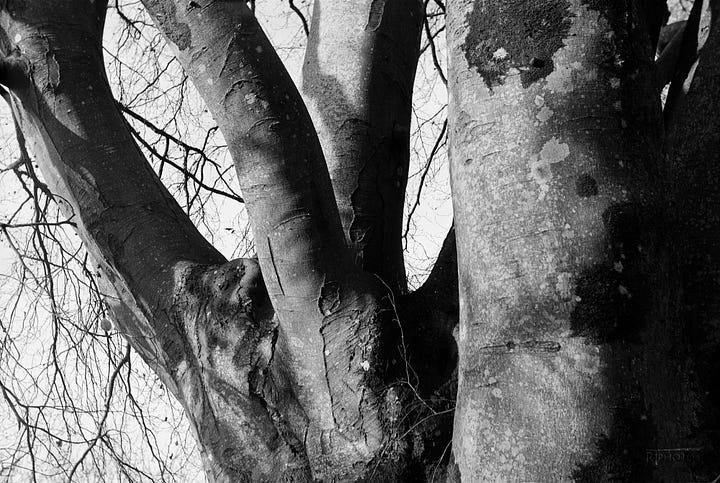
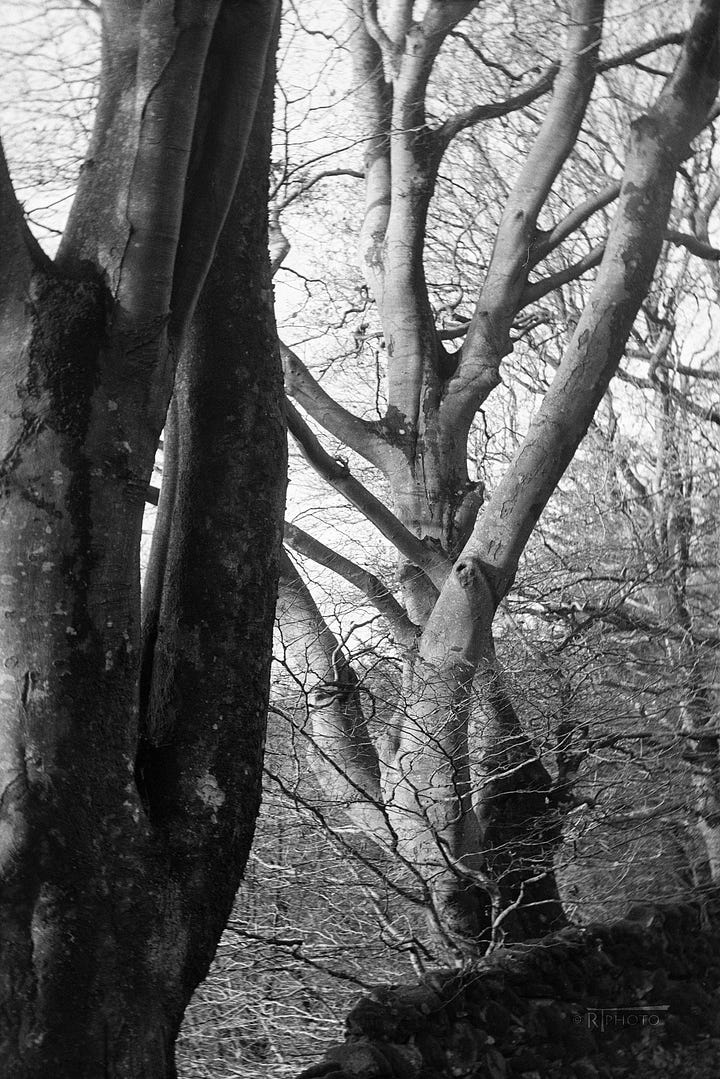
A common feature of a number of lenses of that era is the preset nature of the aperture control. It works quite well in allowing for a slicker stopping down action when framing the shot. Of course, you do have to remember to stop the lens down again after focussing. and therein lies the problem, at least for me. I have been absent-minded all my life, something that's definitely not getting better with age. As a result, a few shots were a tad overexposed. I can't blame the camera, though, as it is capable of full auto-aperture functionality with the right lens. Luckily, with the film's tolerance of my tomfoolery, some of the results came out ok with an appeal of their own.
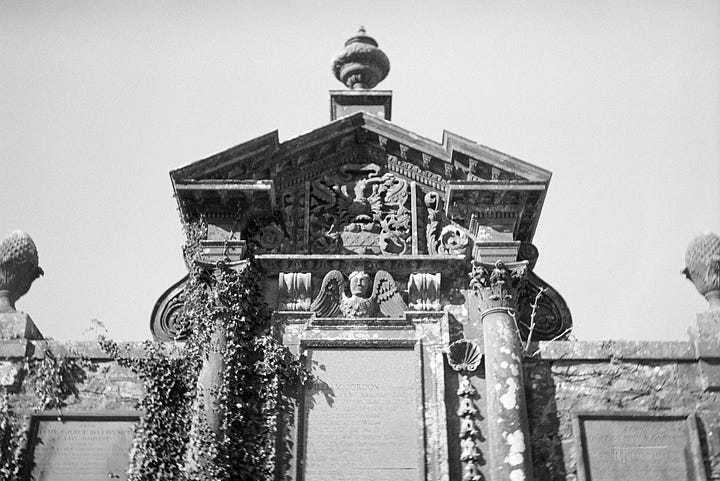
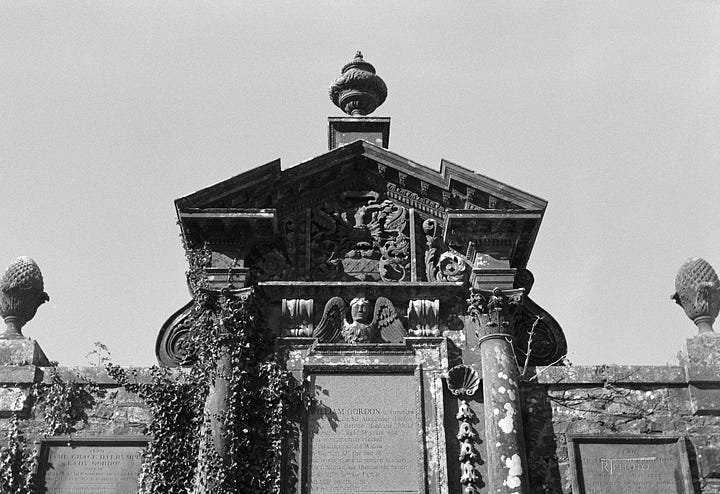
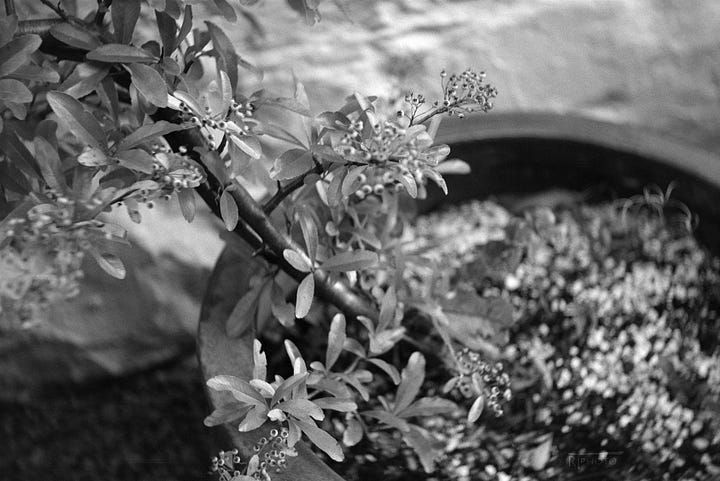
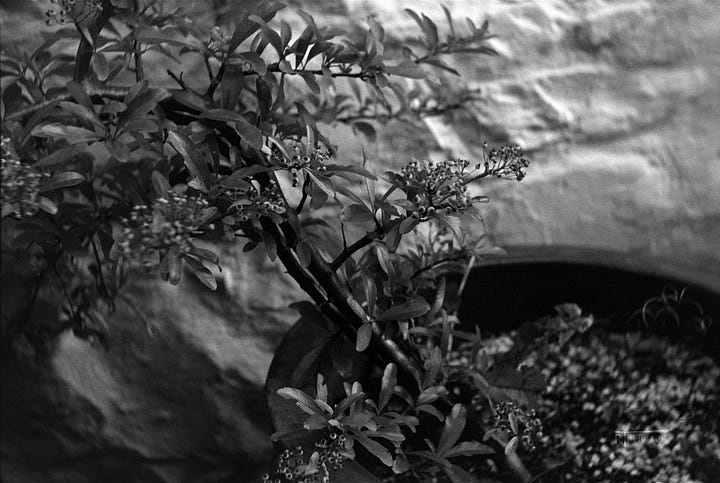
Most likely with regular use, like with so many things, successful handling of the camera would become somewhat easier, rewarding the user with some pleasing results. As this was my first jaunt out with it, though, my results were a little mixed.
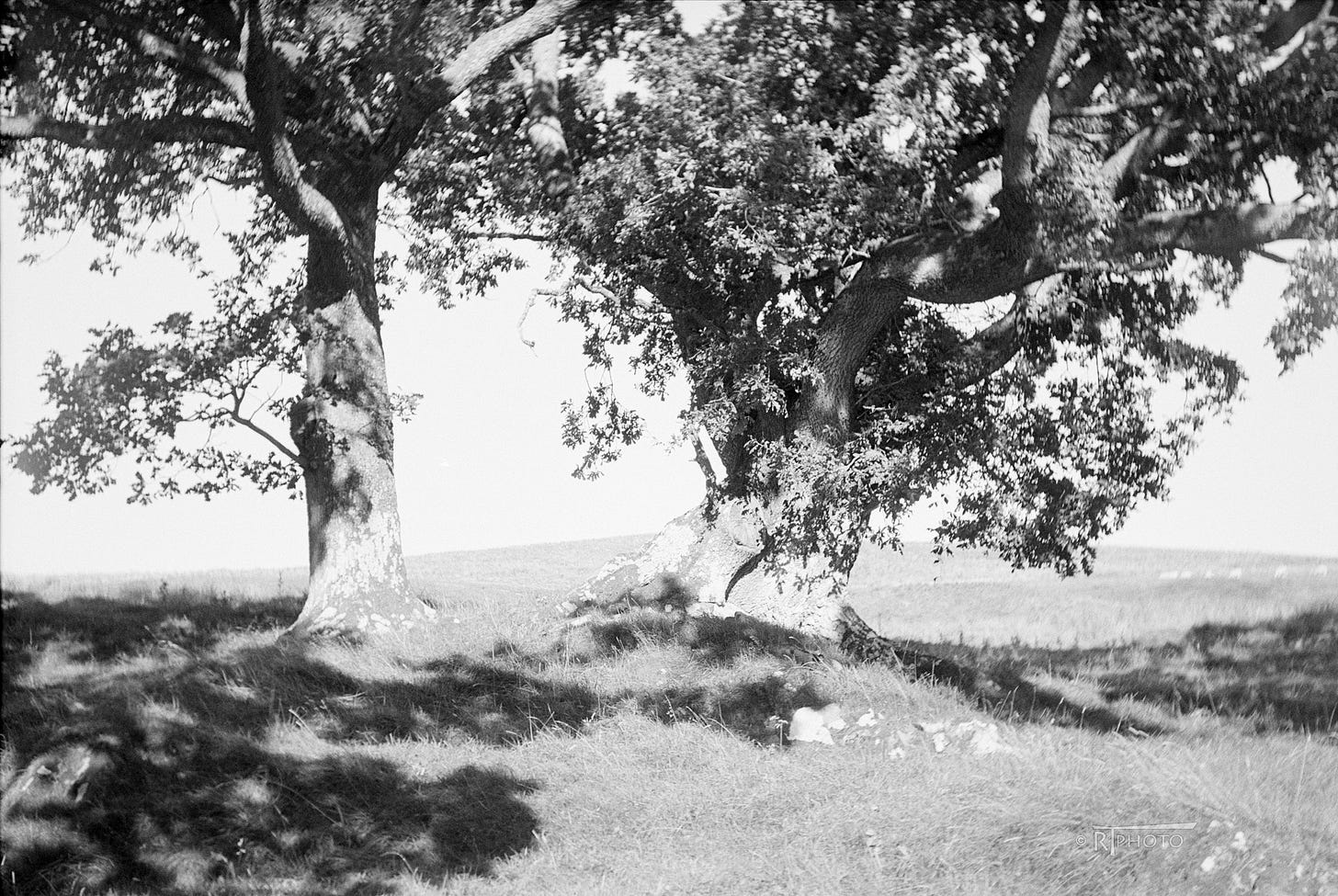
When all went well, though, I was quite pleased with the images produced. There likely would have been a few more images to choose from if it hadn't been for a faux-pas on my part at the developing stage. Having loaded the film, sealed the tank and removed all items from the changing bag, I decided to check how much of a tongue of film was left protruding from the cassette… rather than the expected half an inch or so, it just kept coming…aargh! I hastily loaded this remainder into the tank in case there was anything salvageable. The frame below was all that was left on that section. Ah well, you live and learn, I guess.
I hope you have enjoyed those images that didn’t succumb to my error.
~*~
Thank you you for stopping by. If you enjoyed reading this please consider making a contribution to our collective future and plant a tree or visit:


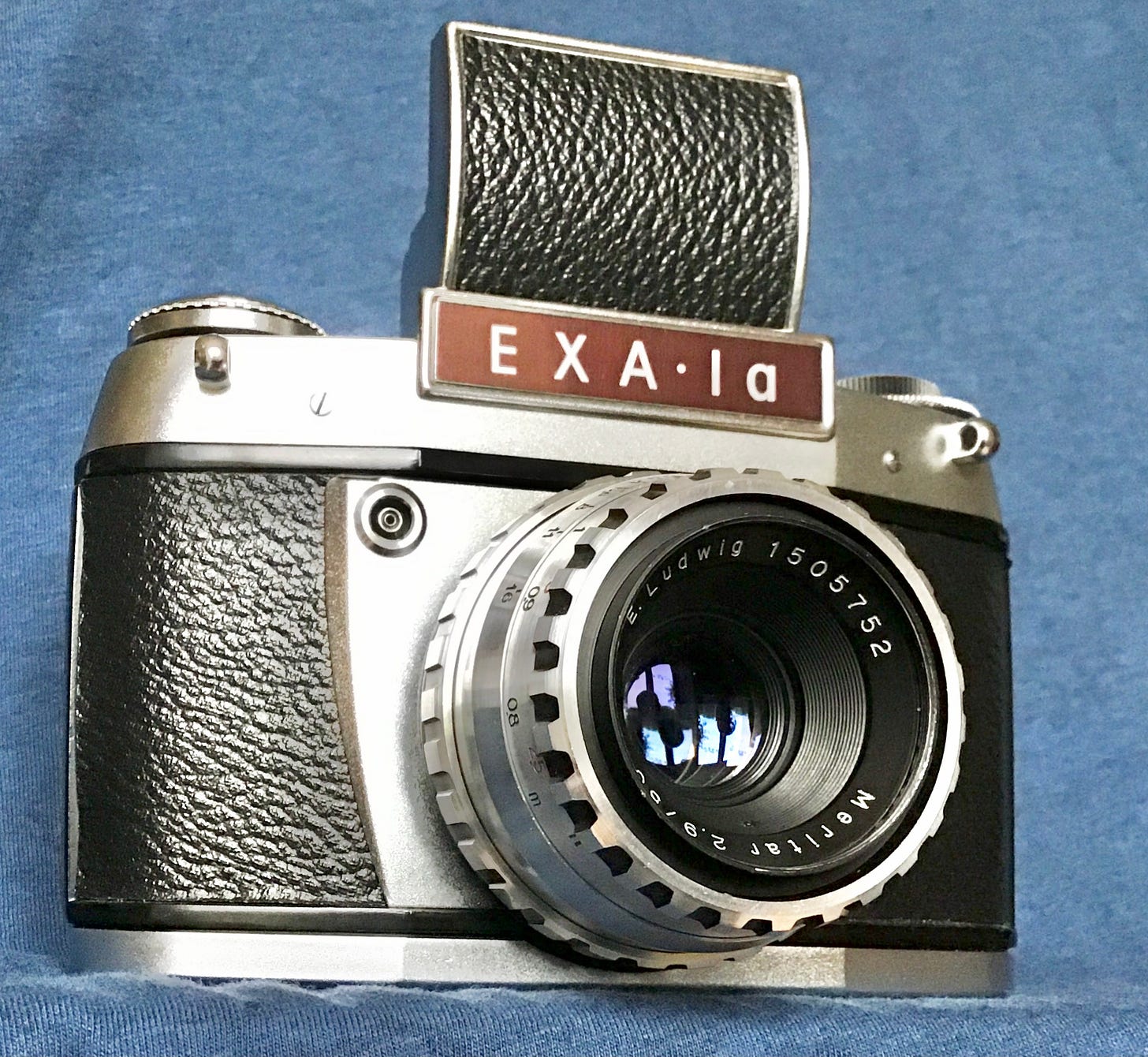

Looks to be a nice new addition to the collection Ralph, sure to keep you amused for sometime yet.
It's interesting to think that there are digital plug-ins that try to emulate the look of these lenses. Modern lenses don't give the same look, or the same feel as your Meritar.